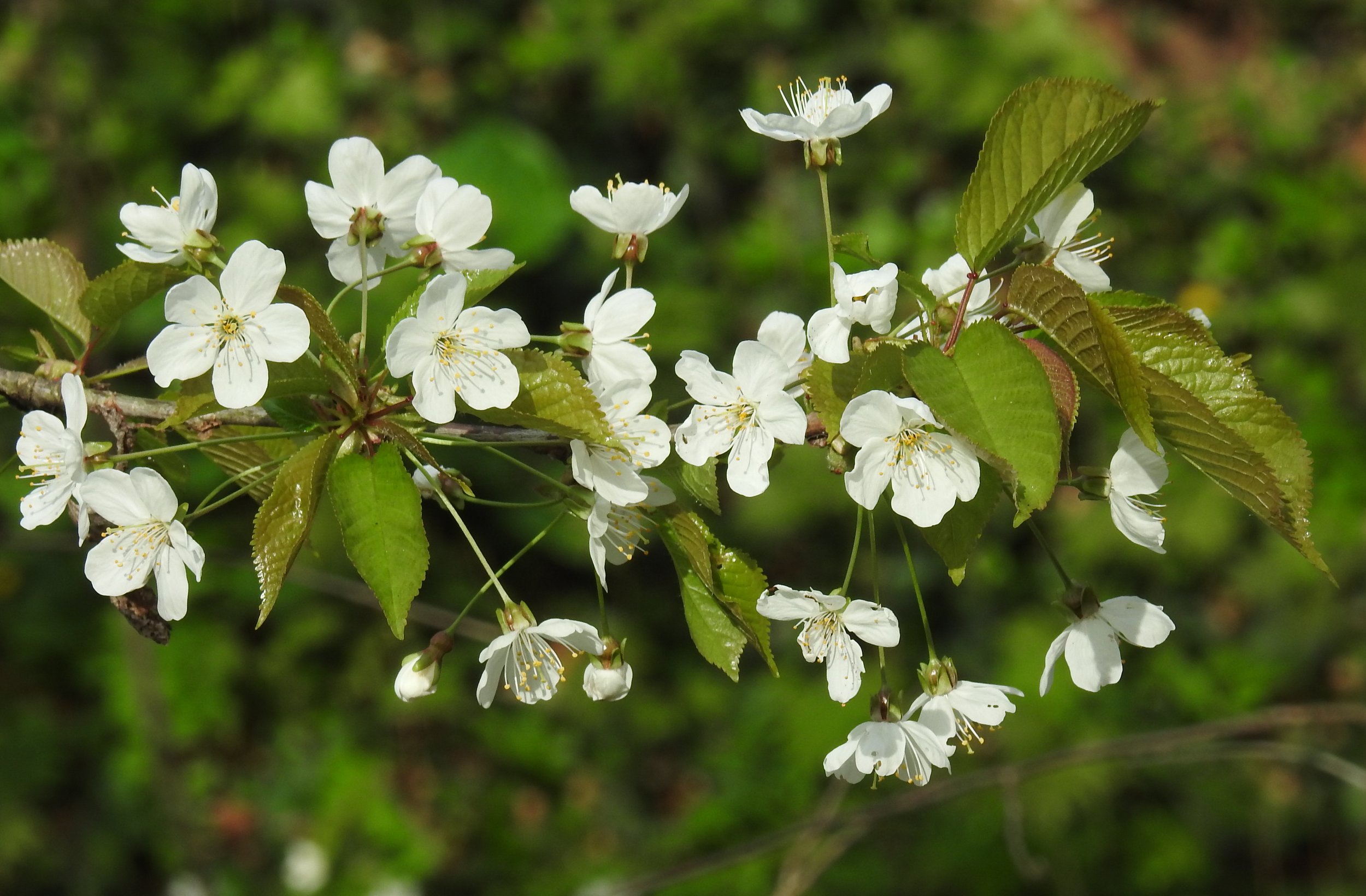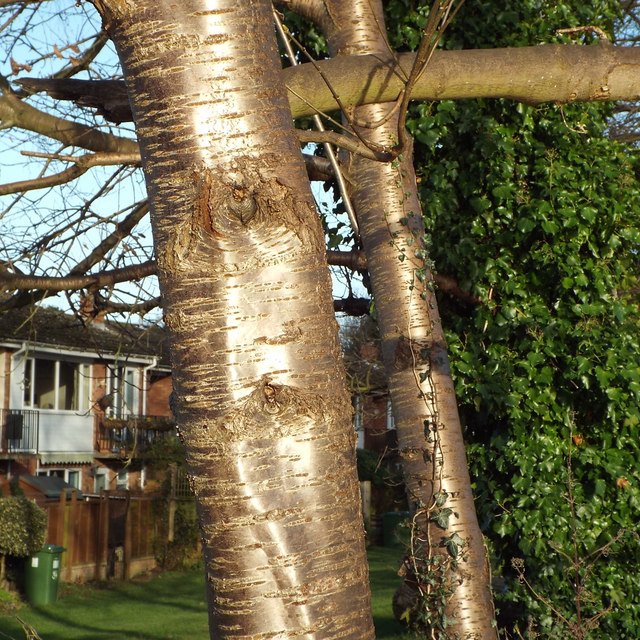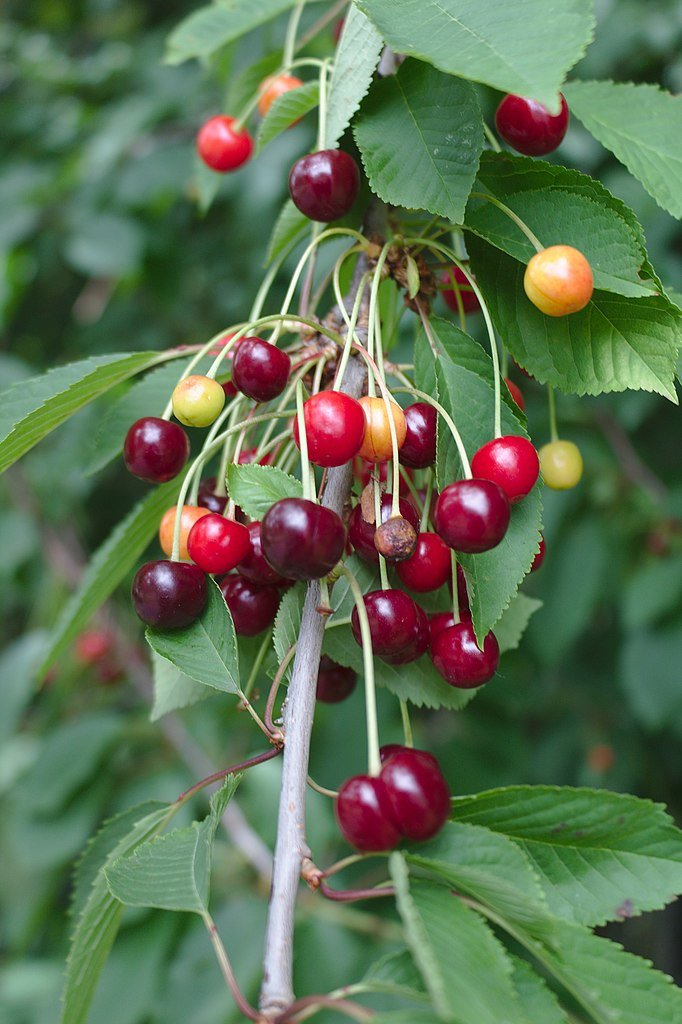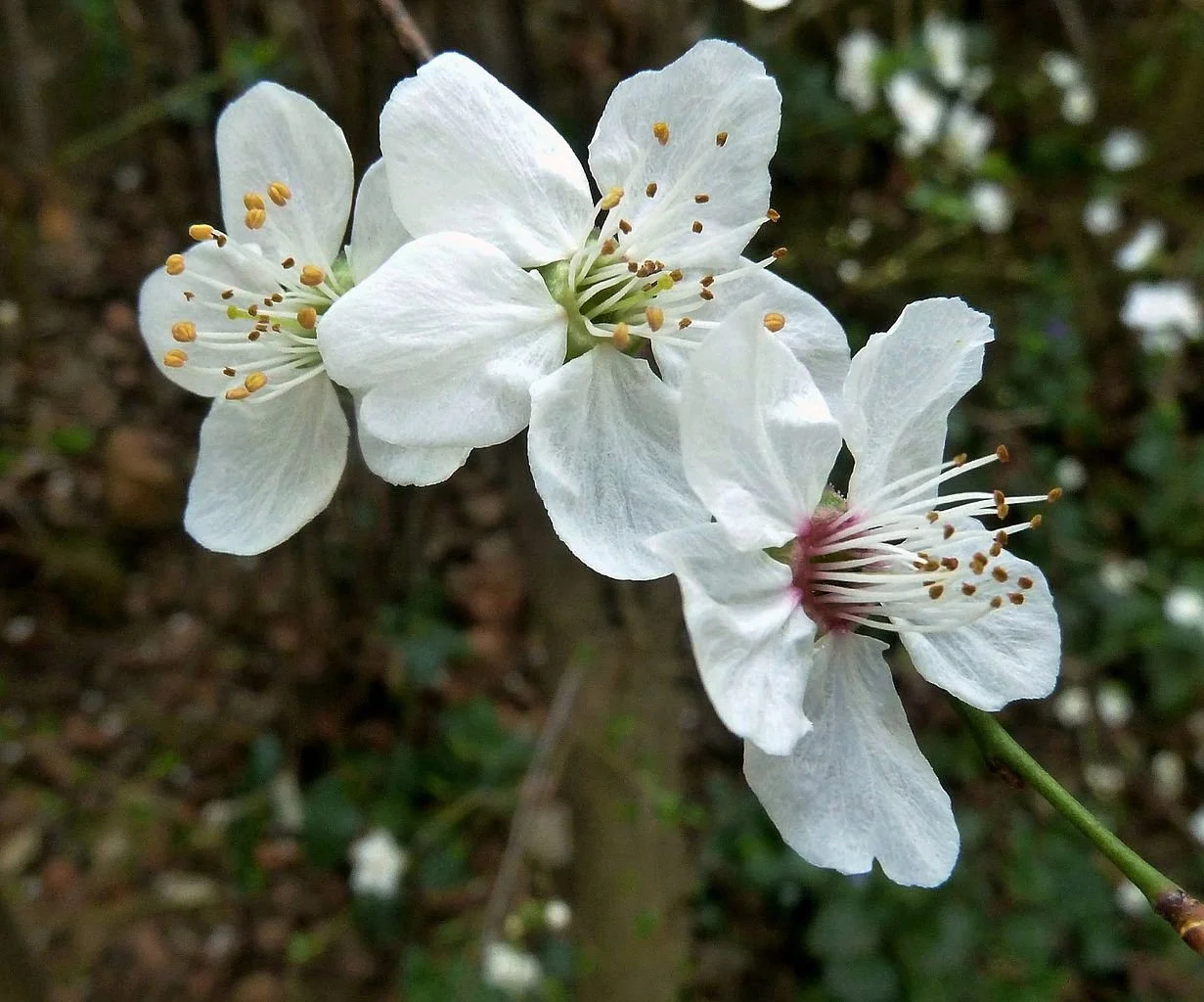One of our shortest lived native tree species, the Wild Cherry (Prunus avium, also known as the Sweet Cherry or Bird Cherry) is also one of our showiest! Profusions of snow white blossoms herald the spring and early summer, followed later in the year by bunches of petite, brilliant red cherries. A huge favourite with our native bird life (hence the secondary name, “Bird Cherry”) these trees are the ancient ancestor of the cultivated Cherry and are perfectly at home in the wild and in the garden.
The Wild Cherry is a an easy one to identify throughout the year. The bark is grey to a reddish brown, sometimes shiny in younger trees, with distinctive horizontal bands from the base of the trunk all the way out to the tips of the branches, meaning that you can quickly spot it even in the depth of winter without the leaves, fruits and blossoms which make it so easy to identify in the warmer months. The blossoms are hang in white clusters, with five petals to each flower; if you are looking at a Cherry tree with a ruffled or double blossom then is more likely an ornamental or cultivated variety. The fruits themselves are smaller and often lighter than what you might find in the supermarket, starting off with a peachy or orangey tone before developing into a bright red colour. The fruits are edible, but you will be lucky to get any as they tend to be hoovered up by birds as soon as they are ripe. Confusingly, a close relative of the Wild Cherry is also known as the Bird Cherry; Prunus padus is also a wonderful tree for wildlife, however it produces inedible fruits which have a closer resemblance to elderberries than traditional cherries and is also notable for the unpleasant smell produced by its bark, although its blossom has a wonderful almond scent.
Reaching a top height of 30 metres, although only living for around 60 years at the most, the Wild Cherry has the potential to become a tree of notable size when given the space and freedom to do so, but it can live very happily at more manageable heights and responds well to pruning. The wood of the Wild Cherry is a good burning wood when seasoned, and when still fresh and wet can be seen to have a pinkish, cherry like tint to it. In seasoned wood this colour can mature to a beautiful reddish-brown, making Cherry a wonderful source of wood for furniture, ornaments and carving. The fruits can of course be eaten, as well as used to create treats like cherry brandy! Wild Cherries can be excellent in medium to large domestic gardens, encouraging an abundance of native wildlife and acting as a perfect signpost for the changing seasons.
The Tamar Valley, particularly between Saltash and Calstock, was once well known for its springtime displays of Cherry blossom. The Cherries that grew here were particularly adapted to the unique conditions of the tidal valley, although sadly today their numbers have been greatly depleted by changes in farming and marketing. A few varieties have been preserved, and it is still possible to see a small number of stalwart trees blooming in the fields around the estuary in the spring, but today you are much less likely to find large groves of Wild Cherry. Instead, you might come across them more frequently in built up settings and in gardens, and often in companionship with a cultivated variety. Their frothy, eye-catching blossoms are hard to miss in the spring, so keep an eye out and return to the same spot in the summer for a chance to forage some fresh, wild cherries!
Photo Credits:
Lead Image - AnemoneProjectors, 19/04/2010
Blossoms on Branch - Robert Flogaus-Faust, 31/03/2017
Bark - Robin Stott, 02/01/2015
Cherries - Rodhullandemu, 20/06/2020
Blossoms Closeup - JMK, 16/08/2015





